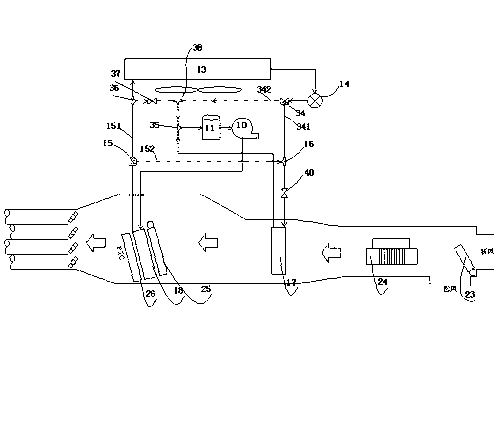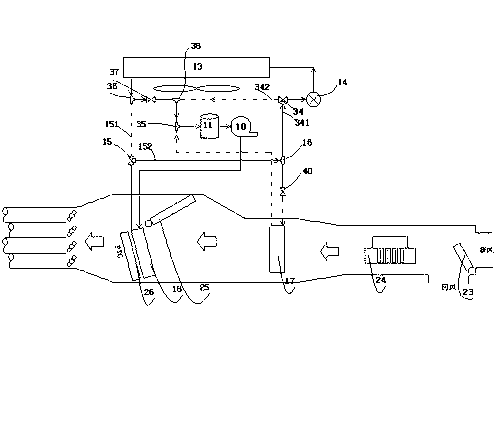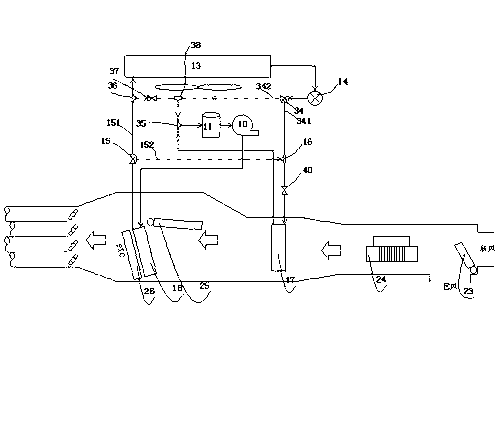Automobile air conditioning system
A technology for automotive air conditioning systems and cabins, applied in vehicle components, air handling equipment, heating/cooling equipment, etc., can solve problems such as increasing vehicle load, discounting in-vehicle comfort, and affecting the driver's line of sight, avoiding high and low temperature shocks , to meet the comfort requirements, to ensure the effect of temperature and humidity
- Summary
- Abstract
- Description
- Claims
- Application Information
AI Technical Summary
Problems solved by technology
Method used
Image
Examples
specific Embodiment approach
[0070] Introduce the second specific embodiment of the present invention below, Figure 7 It is a schematic diagram of the pipeline connection of the second specific embodiment of the present invention. This embodiment is an improvement on the above first specific embodiment. A bypass channel is provided for the heat exchanger 13 outside the compartment, specifically a three-way is provided at the inlet and outlet of the heat exchanger 13 outside the compartment. Pipe fittings, the third electromagnetic three-way control valve, such as Figure 7 In the middle, a third electromagnetic three-way control valve 28 is arranged in the pipeline between the heat exchanger 13 outside the vehicle compartment and the second electromagnetic three-way control valve 15, and is arranged in the pipeline after the outlet of the heat exchanger 13 outside the vehicle compartment A three-way pipeline piece 27, an interface of the third electromagnetic three-way control valve 28 is connected with...
Embodiment approach
[0072] The other three operating modes can refer to the first specific implementation mode above, and the relevant valves controlled by the electromagnetic control can be operated to switch the relevant flow direction, and the flow mode of the refrigerant can be changed, which will not be described here.
PUM
 Login to View More
Login to View More Abstract
Description
Claims
Application Information
 Login to View More
Login to View More - R&D
- Intellectual Property
- Life Sciences
- Materials
- Tech Scout
- Unparalleled Data Quality
- Higher Quality Content
- 60% Fewer Hallucinations
Browse by: Latest US Patents, China's latest patents, Technical Efficacy Thesaurus, Application Domain, Technology Topic, Popular Technical Reports.
© 2025 PatSnap. All rights reserved.Legal|Privacy policy|Modern Slavery Act Transparency Statement|Sitemap|About US| Contact US: help@patsnap.com



